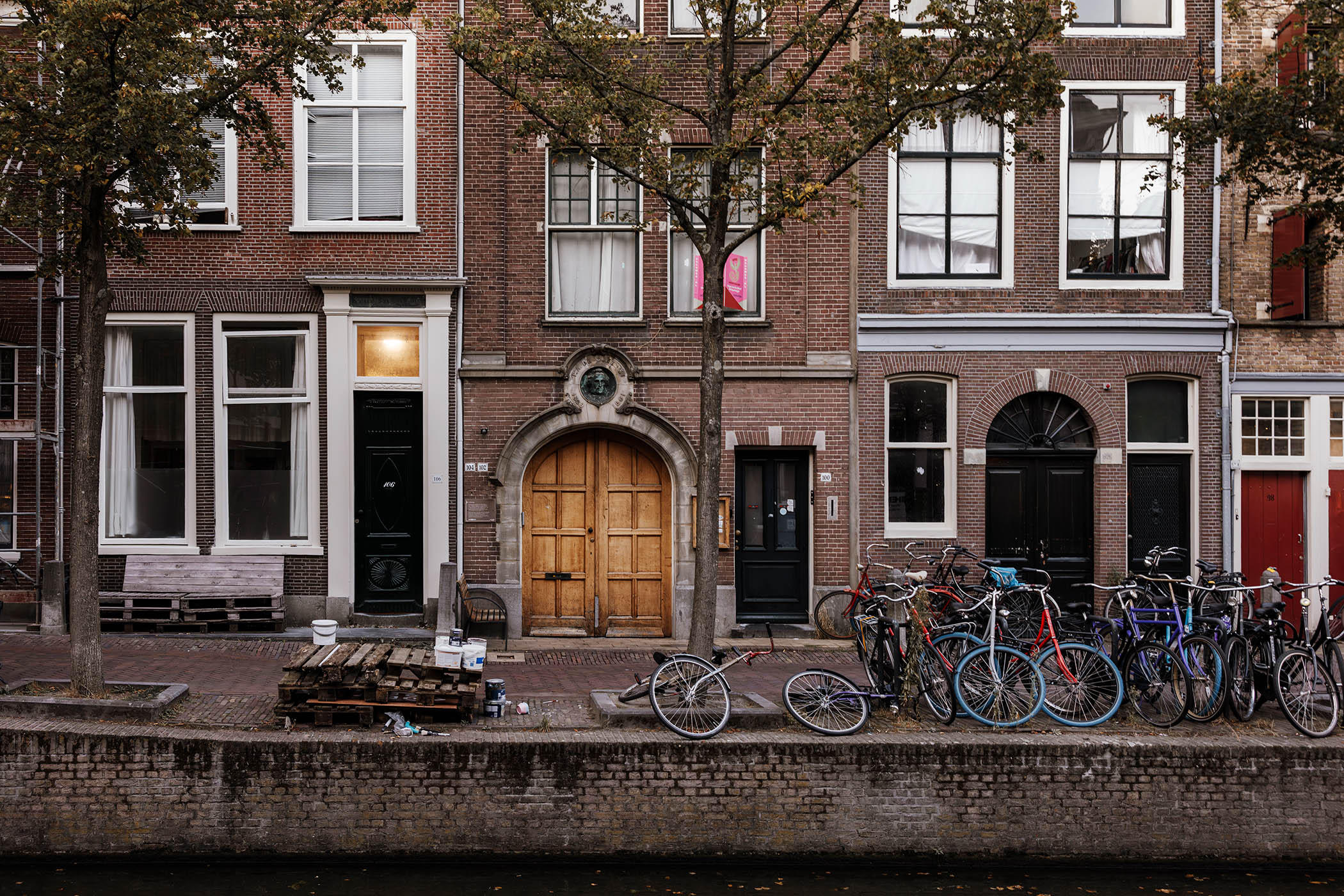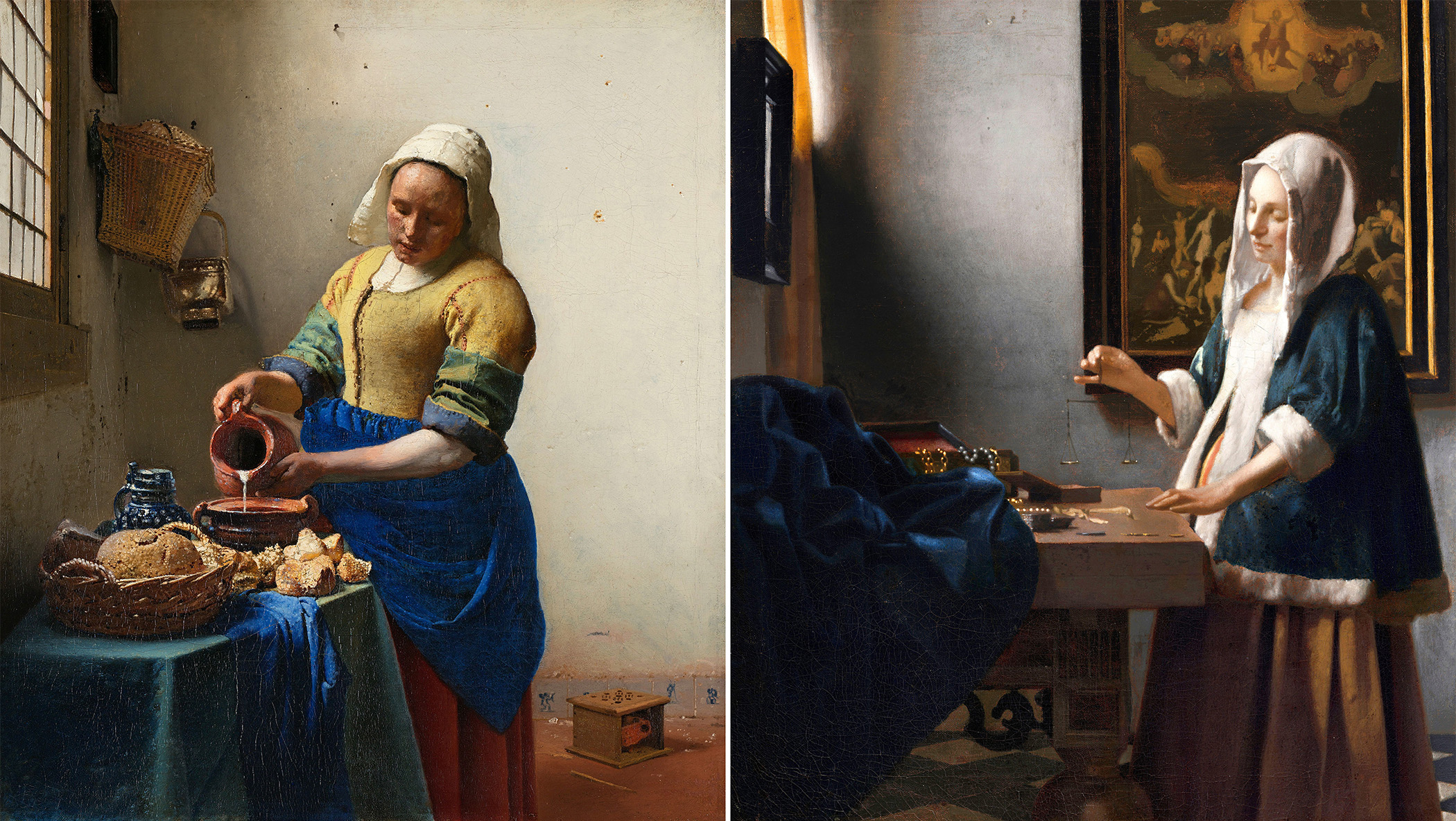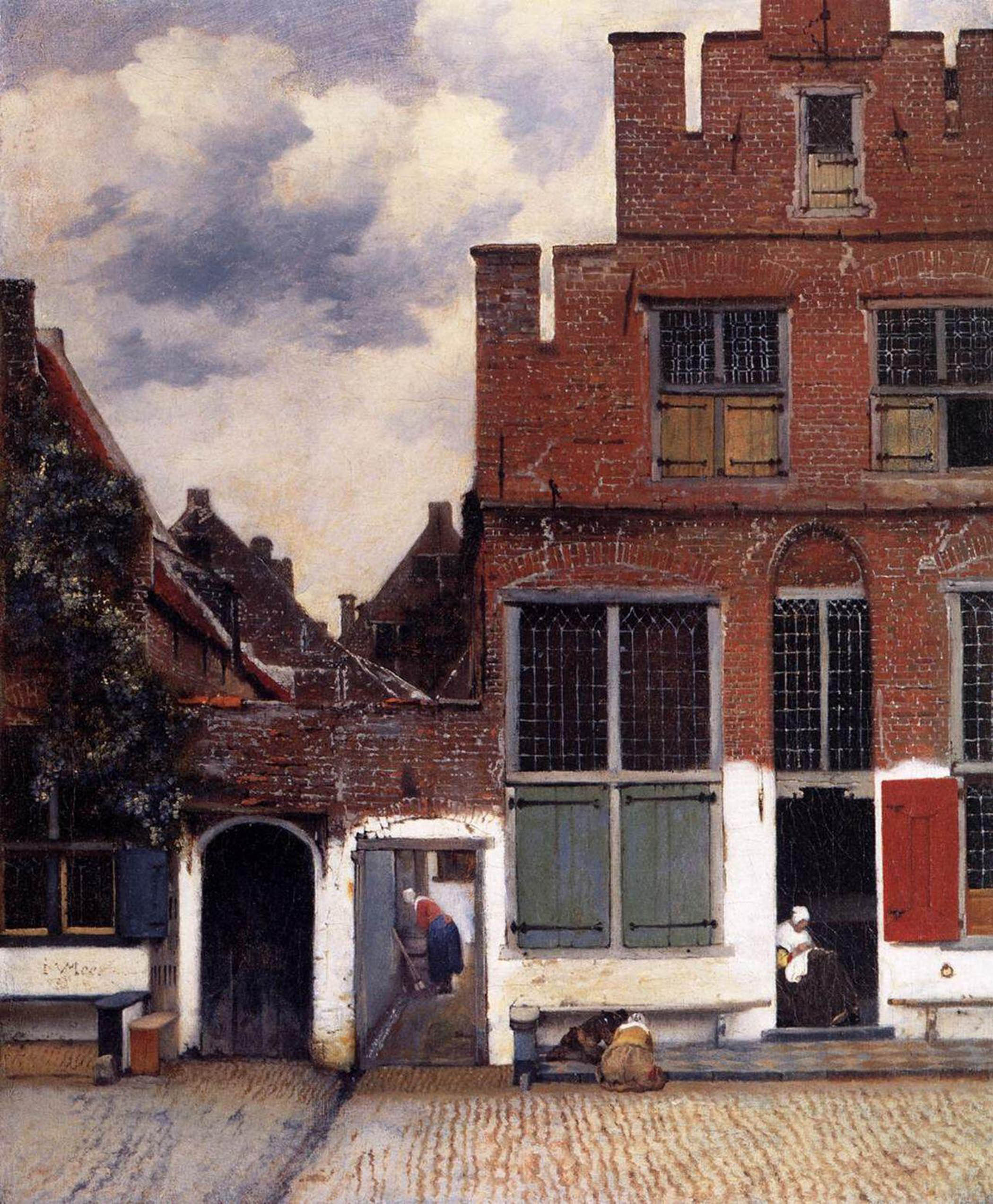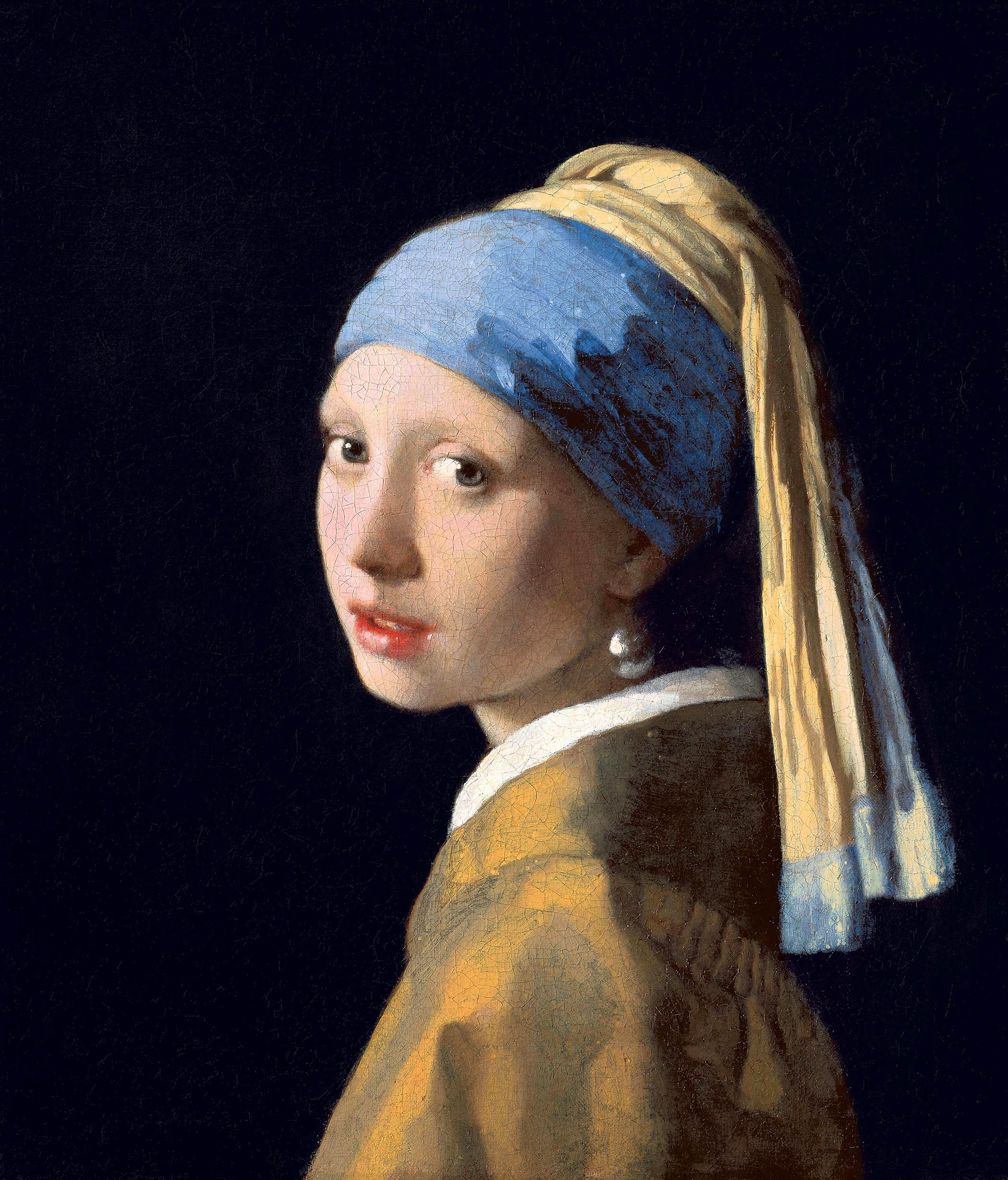Photography by Ilvy Njiokiktjien
In a car leaving Amsterdam, one of the most engaging of cultural sleuths, the art historian Andrew Graham-Dixon, is turning in his seat to assure me in a half-whisper that he has made a revelatory “sort of double discovery” about Johannes Vermeer. It is a conspiratorial moment that might merit a glance up to the rear-view mirror. Is our car to Delft being followed? Will we both make it safely back out of the Netherlands?
The stakes are reputationally high, because no matter how many tea towels, placemats and fridge magnets are printed with Vermeer’s radiant masterpieces, the elusive, meditative quality of his work means the paintings are puzzles still waiting to be solved. Since few clues survive, discovering their original significance has proved a hard cold case to crack.
In his new book, Vermeer: A Life Lost and Found, Graham-Dixon puts forward a revolutionary theory about the work of an artist whose genius is rarely disputed. Right or wrong, it is a theory that will change the way people look at that famous pearl earring, as well as at the painter’s other luminous portraits of lone women. During six years of research, the author tells me, he has come across two key new findings: “Both a satisfying explanation of Vermeer’s work and a remarkable group of people I was completely unaware of. They are full of wisdom and kindness.”
His detective work hinges on the faith of the painter’s close circle of patrons, neighbours and benefactors, all members of a persecuted religious group who can at last step out of the shadows. The new information also allows Graham-Dixon to set out a persuasive case for naming the mystery woman in some of the artist’s best-known portraits and for locating Vermeer’s much-loved work The Little Street.
“It has been emotional at times,” he says. “I kept thinking: ‘How did I never see the connections?’ I have now met all these wonderful historic characters. Half of them were just hiding behind the furniture: there’s Baruch Spinoza, almost certainly a friend of Vermeer’s; then the legacy of Erasmus and the influence of the theologian Jacobus Arminius; not to mention the enlightened arts patron Adriaen Paets, a director of the Dutch East India Company and the most influential Dutchman no one has ever heard of. They have become my heroes. And yet Vermeer himself, of course, is never really in the room. He’s always just left!”

Andrew Graham-Dixon inside the Remonstrant church in Delft
Graham-Dixon, familiar in Britain as a broadcaster and arts pundit, cuts a figure as imposing and dapper now, at 64, as he must once have done at Westminster school and as an English undergraduate at Oxford. A veteran communicator and host of several television documentary series, he’s the kind of intellectual dynamo who is always occupied with intrigue. By the time we get out of the car in modern-day Delft, we may as well be arriving in the artist’s 17th-century city, so total is Graham-Dixon’s command of his tale.
The great Dutch painter, who lived from 1632 to 1675, is usually assumed to have become a Catholic simply because he married one, but even that is uncertain. Not for nothing has Vermeer been called “the Sphinx of Delft”. His biography is vague and his name appears in few official records. This, Graham-Dixon thinks, is probably because he was such a good citizen, cropping up only in the register of the Delft artists’ guild. His activities went largely undocumented by the state, unlike the painter Caravaggio, another of Graham-Dixon’s subjects, who can be tracked through his many crimes and misdemeanours.
But the real puzzle Vermeer poses is not limited to the scant details of his life. Nor to the scarcity of his work – only 36 paintings in all. No, for Graham-Dixon, at least, the deeper mystery lies in those intense studies of young women – each lit by sun streaming in from the left through a window. Sometimes it’s the same woman, in the same fur-trimmed yellow jacket. “Vermeer paints a world so beautiful it moves you to tears. That’s why [his work] had survived, even before the French critic Théophile Thoré built up his standing in the 1860s. No one damaged or threw away these pictures and now I can explain why. I can unlock a mystery that has been perceived by all who look at them, but not understood.”
It is the purpose of these paintings, their true intent, that Graham-Dixon believes he has uncovered and that will – aptly enough – illuminate the practice of this master of light. The works were, he argues, intended as a guide to spiritual life, designed to morally instruct the viewer. To lay out his evidence, he walks me briskly around the key sites: De Génestetkerk – a hidden church – the busy Grote Markt square and some smart addresses along Oude Delft.
A garrison town, laced with canals, Delft was still recovering from war in 1654 when a quarter of its streets were flattened by a huge gunpowder explosion. This was the infamous “Thunderclap” that killed Vermeer’s contemporary Carel Fabritius, the painter of The Goldfinch. To set the scene of that time, Graham-Dixon explains how Holland had only recently separated from southern Spain and how austere Calvinism was the dominant religion.

There is a hidden church behind this facade on Oude Delft, which Graham-Dixon believes is the location for Vermeer’s painting The Little Street
That other faiths could worship fairly freely, however, was due to the influence of the liberal merchants who made the new independent state wealthy. But there were growing ruptures among the Calvinists themselves, and these small differences soon became large schisms and accusations of heresy. “There was a continuing struggle for the soul of the republic. The hardline Calvinists felt they had God on their side and should fight on against Catholic Spain,” says Graham-Dixon. “The merchants argued back that it was neither good for business nor for their souls to contend there was only one way to believe.”
Leading the liberal charge was Arminius, the young intellectual who gives his name to Arminianism, a principled tradition that stood firmly against damaging doctrinal disputes within the church and beyond it. “In a beautiful speech,” Graham-Dixon says, as we walk past the tilted tower of Delft’s Oude Kerk, where Vermeer is buried, “Arminius argued the Dutch should embrace their enemies and make peace with the Catholics and Mennonites, and not persecute Jews. His followers issued a remonstrance of protest in 1610, but they were then expelled from the church and went into hiding.”
This moment of Calvinist repression spawned the Remonstrant Brotherhood, the covert and avowedly tolerant sect that, Graham-Dixon argues, was to shape Vermeer’s early years. His book finds evidence for strong links between the painter’s parents and clandestine followers of this liberal tendency. In fact, he is convinced he has also established Vermeer as a member of an even more self-effacing splinter group: the Collegiants. This faction stood against all formal rituals of faith. Services were unfussy domestic gatherings and religious observance meant following the practical guidelines set down by Christ and by the humble example of Mary Magdalene. They were a direct influence on the Quakers in England.
“These were radicals who wanted to get rid of churches and priests. They wanted no organisation and no ministry,” says Graham-Dixon. “Their texts were still written by men, but women had freedom of utterance for the first time. The Collegiants had no beliefs other than those Christian teachings that might save the world, such as ‘Love thine enemy’ and ‘Suffer the little children’. They were Vermeer’s people. You didn’t have to believe in God, so a lot of us today are actually Collegiants without knowing it.”
As a young migrant from Antwerp, Vermeer’s mother, Digna, had been taken into the home of wealthy Remonstrants in Amsterdam. When Graham-Dixon discovered that the family she lodged with were later linked directly to Arminius’s descendants by marriage, he had to rewrite the entire opening section of his book, he recalls, rather gleefully.
But Graham-Dixon was not, he admits, the first to suspect Vermeer of a crucial connection to outlawed nonconformists. He picked up the idea 20 years ago when he paid a visit to the elderly doyen of Dutch art scholarship John Michael Montias, author of a seminal study, Vermeer and His Milieu. “I was friends with Montias, and talked to him shortly before he died. He told me he wished art historians had pursued a trail he had unearthed, linking Vermeer’s chief patrons to a banned religious group. I took his words as an encouragement to go forward,” Graham-Dixon says, “although I thought I probably wouldn’t find anything else.” In fact, he has found a series of fresh links in the chain.
Documents prove that Vermeer’s father, Reynier, a silk weaver, asked one of Delft’s leading secret Remonstrants, Johannes Taurinus, to sign the paperwork that allowed him to marry Digna in Amsterdam, instead of going to a Calvinist relative. Graham-Dixon wonders if they also named their son after him. Once married, Vermeer’s parents moved to Delft to run an inn, the Flying Fox, an establishment that still exists. They grew close to “a small nucleus of Remonstrants” living nearby, but chiefly to the Van Ruijven family. It is these wealthy burghers we must thank for almost all of Vermeer’s most admired work. The artist began painting for them in about 1657 and continued almost exclusively for 13 years. When he did stop, he pretty much gave up painting. It was, Graham-Dixon writes, “an arrangement without parallel in the history of art”.
The Van Ruijven matriarch, Maria de Knuijt, held covert Collegiant meetings in her house on Oude Delft in front of the hidden Remonstrant church. Research conducted by the Rijksmuseum in Amsterdam for its big 2023 Vermeer exhibition supports the idea that it was she, not patriarch Pieter van Ruijven, who was the artist’s real patron. It was their daughter, Magdalena, whom Graham-Dixon contends was the mystery subject of several of Vermeer’s best-known portraits. If this is true, then we all know her face: she is the Girl with the Pearl Earring. What’s more, it is the Van Ruijven home, the first gallery for Vermeer’s work, that is the real site of the painting The Little Street.

The Milkmaid, left, and Woman Holding a Balance, two of Vermeer’s paintings that Graham-Dixon believes were intended as an instructive pair
A postcard of this picture, with its sludge-green gate and leaning broom, was pinned on my wall for years. The muted colours are lovely, but its lasting appeal is the sense of daily life it conveys. Speculations have come and gone about the exact spot it depicts, but Graham-Dixon walks me confidently down Oude Delft, over a canal bridge. Pausing by double wooden doors, he tells the excited students living there that this is the exact place: the facade of the former home of the Van Ruijvens is The Little Street. Spookily, there is even a broom resting against the brickwork, although, less atmospherically, the alley is lined with cardboard boxes of empty wine bottles.
Graham-Dixon says he recalls when things fell into place. Working at his desk in East Sussex, he “suddenly thought, with bell-like clarity: ‘Vermeer was probably not a Catholic at all. Marrying a Catholic is exactly the thing a true Remonstrant would do.’” Remonstrants and Collegiants, after all, saw themselves as partners in a battle for religious tolerance and allowed members of other faiths to set up “colleges” of their own. Mennonites, Catholics, Dutch Reformed and some Jews became quietly involved, although they also often worshipped in their own churches. “The penny really dropped,” Graham-Dixon says, “when I looked at a note of the last big loan of cash ever made to Vermeer and saw it was from Arminius’s grandson. I understood then that all the portraits made for the Van Ruijvens must be devotional paintings, created to aid the worship of those meeting secretly inside that house. Each picture expresses some shade or other of this belief.”
To illustrate the point, he refers to the celebrated painting known as The Milkmaid: “It’s the same size as the picture Woman Holding a Balance. It is the same light, in the same room too. And at the same point [near the top of] the wall, a bare nail sticks out. This was the Remonstrant symbol for the crucifixion. I believe these paintings depict two sides of religious life; the ‘charitable’, in which a woman prepares bread and milk for the poor, and the ‘contemplative’, where a woman weighs her soul on scales. The works have never been paired, but once you see it, it is there.”
Recognising the portraits as instructive panels explains their mood of gentle concentration, Graham-Dixon believes. “Vermeer was not driven by fame nor money, but by some deep feeling or belief, or he could not have painted the way he did.” Once the author had comprehended this, his book was written quickly, in three months.
Convincing others of his discovery proved tricky. Graham-Dixon puts his cards on the table at the start of his book: “The account of Vermeer that follows is largely and perhaps disconcertingly new,” he writes. “This is a side of Vermeer that has been lost from view, although I believe those who have truly loved his work have often sensed its presence.” It does not, he promises, “reflect any vigorous striving for originality on my part”.

The lasting appeal of The Little Street lies in its depiction of everyday life
This disarming tactic has already won him support from one influential Dutch voice. Paul Abels, an expert on religion in the Netherlands, backs his theory, judging him “essentially right” and adding: “You’ve made it clear that Vermeer’s paintings are not simply atmospheric genre pieces, but coded works with a deeply religious meaning. This is totally new.”
The book contradicts the prevailing narrative that Vermeer converted to Catholicism. It also casts serious doubt on the shared academic assumption that the painter strove to record domestic scenes with a realism that merely mimicked the projections of a camera obscura. So Graham-Dixon is braced for pushback from specialists. He says, though, that the most enlightened, even Collegiant, thing he can do is welcome other viewpoints. “What I am trying to explain, as elegantly as I can,” Graham-Dixon tells me, “is the way these pictures express those tolerant beliefs, so I shouldn’t really proselytise for them. Although, if I ever had to say what my beliefs were, I would say I am a Collegiant, any time. I didn’t know this beforehand. I have been converted.”
Graham-Dixon’s compelling description of an event that took place two decades after Vermeer’s death is the proper finale for this detective trail. One day in 1695, an unsuspecting young notary clerk opened the door to a little house on Delft’s central square to take an inventory of its contents after the recent death of its owner – a widower and lowly printer called Jacob Dissius.
Inside, whether the clerk realised it or not, he “stumbled on one of the wonders of the 17th-century world: an art collection the likes of which had never been seen before”. All Vermeer’s Van Ruijven paintings were there. They had been inherited by daughter Magdalena – the girl with the pearl earring – who had married Dissius and moved to the Grote Markt, to the building that still bears the trading name “the Golden ABC”. On Magdalena’s early and childless death, Dissius had become custodian of 20 extraordinary, personal pictures – nearly two thirds of Vermeer’s known output.
Graham-Dixon thinks the reason these tranquil, mesmerising works were still hanging together is spelled out for us in paint by the Sphinx of Delft. Vermeer’s work conveys a peaceful Collegiant creed that he interprets as: “Hatred is increased by being reciprocated, and can, on the other hand, be destroyed by love.”
Understanding this has proved the real reward, he says – far above the thrill of the chase.
Andrew Graham-Dixon will give a lecture on Vermeer at Friends House, London NW1, on Thursday 23 October (andrewgrahamdixon.com). His book, Vermeer: A Life Lost and Found, is published by Allen Lane (£30). Order a copy at observershop.co.uk for £27. Delivery charges may apply.
Images by Alamy

